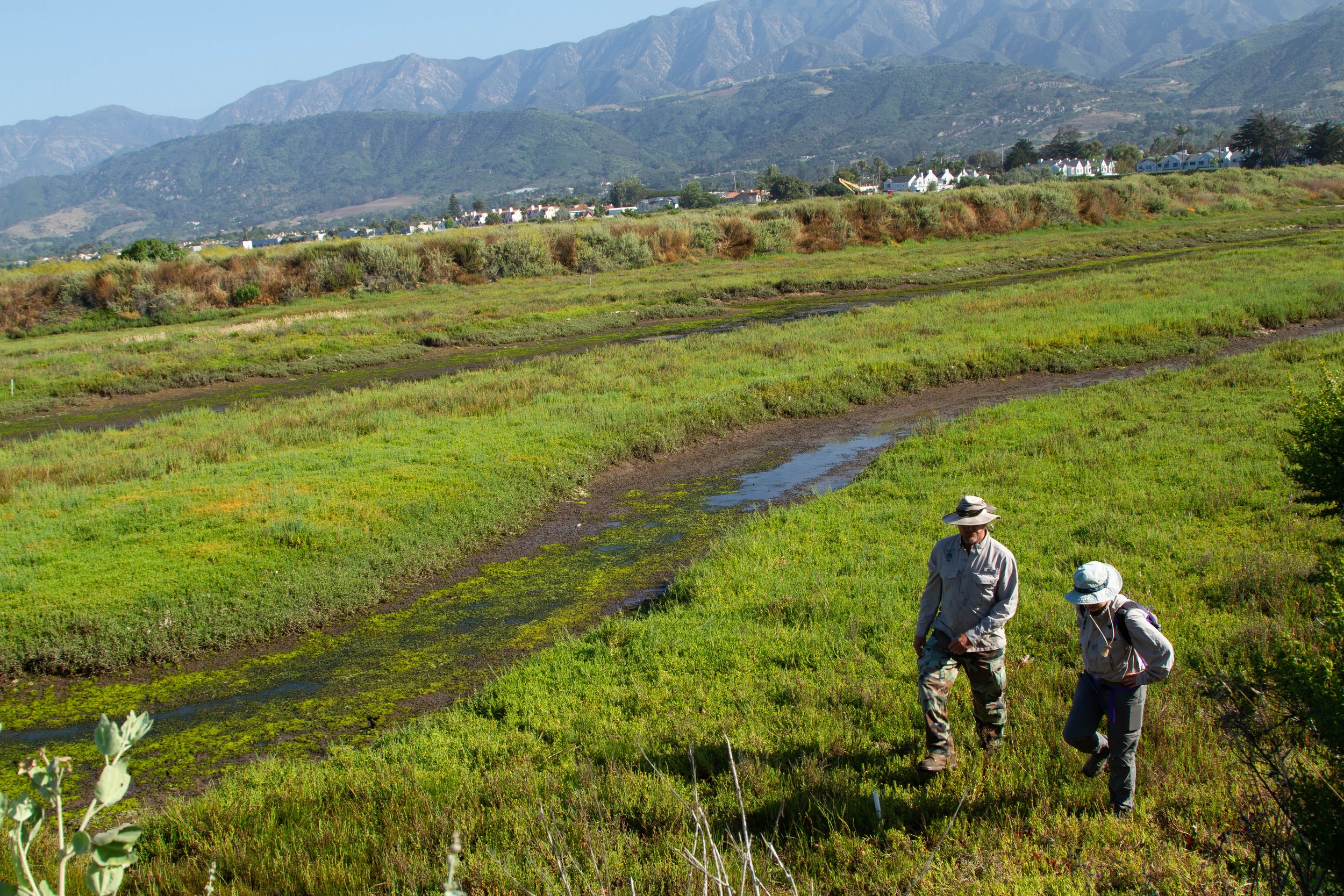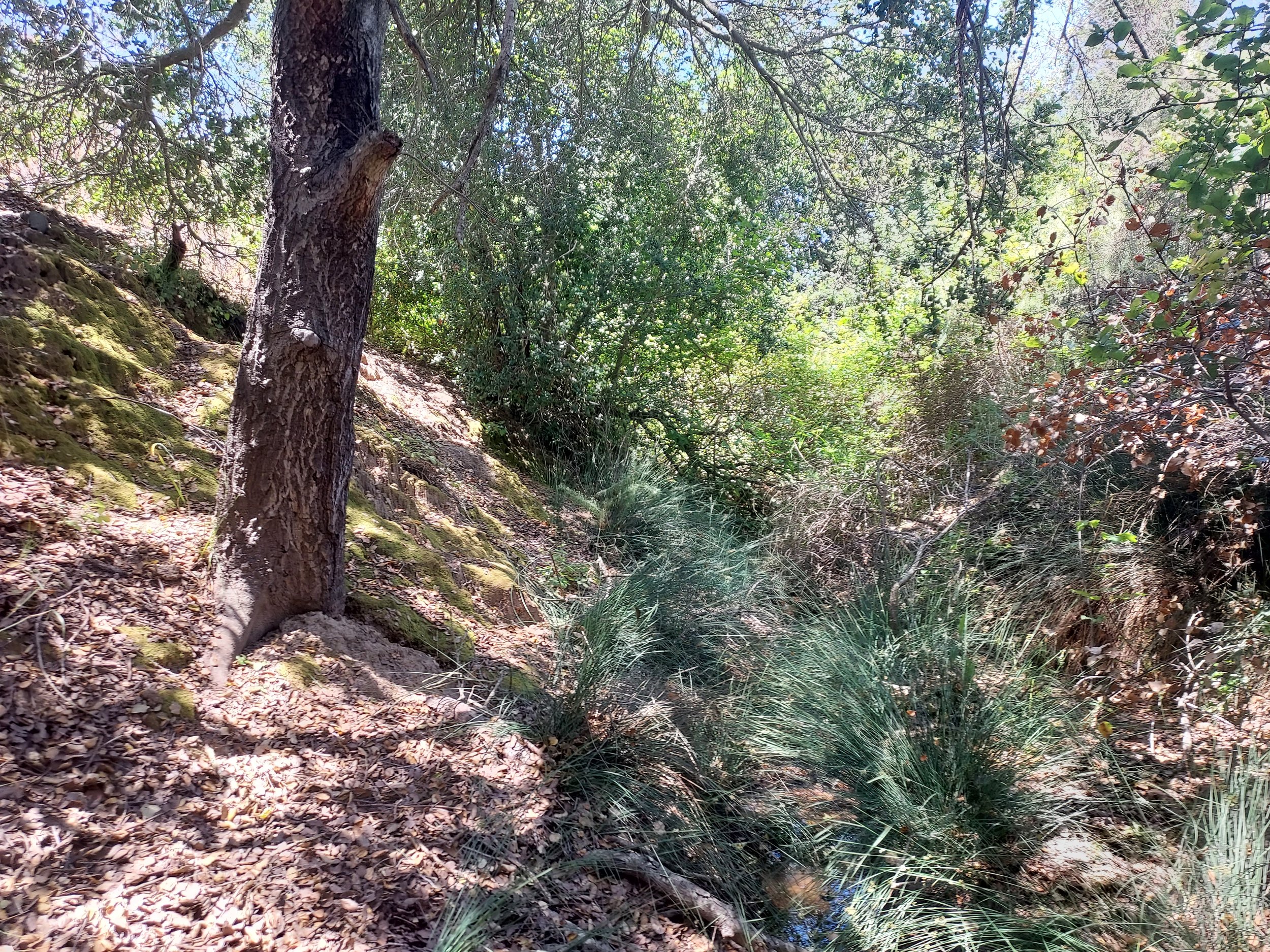Habitat Restoration
Since 2010, Channel Islands Restoration (CIR) in partnership has restored habitat for native animals in several critical areas on the Preserve. Financial support for these projects came from the Goleta Valley Land Trust, San Marcos Foothills Coalition, and outdoor retailers, REI and Patagonia.
These projects were designed to improve the native plant communities that support species such as burrowing owls, breeding grasshopper sparrows, breeding white-tailed kites, raptors, and other native animals.
Two early projects were designed to increase biodiversity and ecological function on approximately three acres of burned riparian and coastal sage scrub habitat adjacent to Atascadero and Cieneguitas Creeks. Long-term grazing in these areas favored the growth of non-native and invasive plants, and the area was damaged by the Jesusita Fire in 2009.
Following the fire, both sites saw a marked increase in the presence of non-native invasive plants. CIR started by removing invasive plant species with the help of hundreds of volunteers, and this was followed by the planting of more than 4,700 native plants grown from locally collected seed.
In addition to the creekside projects, CIR has been removing invasive plants along trails, particularly in native grassland areas and wetlands. We have also planted natives at the Preserves' Via Gaitero entrance. In 2018, CIR began a project to restore grassland habitat on the Preserve through the use of sheep grazing, planting, and ecological monitoring.
CIR has worked with over 2,000 volunteers on the San Marcos Foothills Preserve, with the help of dozens of organizations and schools.
Follow the links below (or scroll down) to see additional information on these projects:
Atascadero Creek
Cieneguitas Creek
Trailside Weed Control
Grassland Restoration
Atascadero Creek Project
CIR staff and volunteers installed a total of 2,875 native plants at the site beginning in 2011. Since the initial plant installation, we planted more natives (mostly grasses) and have removed weeds from the site every year through 2015. Funding for this project was provided by the Goleta Valley Land Trust and by the San Marcos Foothills Coalition.
Scroll down to see before and after photos of the site, plus a list of the native plants there were installed.
Cieneguitas Creek Project
CIR staff and volunteers installed a total of 1,760 native plants at the site beginning in 2011. Since the initial planting, we have removed weeds from the site every year through 2015. Funding for this project was provided by the Goleta Valley Land Trust and by the San Marcos Foothills Coalition.
Scroll down to see before and after photos of the site and for a list of plants that were installed.
2023 REIN Teen Tours
Over the course of four weeks, 10 REIN teens joined Channel Islands Restoration to learn about and support our conservation goals. The students participated in seed collection and invasive species removal at several locations and habitat types to enhance our native ecosystems. With shovels in hand, the teens assisted with site identification and installation of artificial burrows to support our threatened burrowing owl population. The group also got involved with conservation science through vegetation surveys and the community science app iNaturalist, gaining a better understanding of how the data we collect can impact environmental management decisions. Through this mix of environmental education and hands-on experience, the group developed first-hand knowledge into the kinds of interventions conservationists use to protect and maintain the lands that support us and our communities.
Coyote Springs
Home to several sensitive species, the Coyote Springs on the West Mesa of the San Marcos Foothills Preserve is a hotspot for diversity and a target for conservation. One unique characteristic of this spring is that its water source is perennial, meaning it flows year-round and serves as refugia for a variety of animals during the dry summer months. To maximize its utility to the species that rely on it, Channel Islands Restoration plans to deepen the pooling water, increase native vegetation cover, remove non-native vegetation, and extract man-made structures. This will increase the quality and overall amount of habitat available for the benefit of sensitive species and native biodiversity at the spring.
Trailside Weed Control
Starting in 2012, CIR embarked on a project to remove invasive plants along the 2.6 miles of Preserve trails, in sensitive habitats including at the wetland spring near the Antone Road entrance to the Preserve and to install natives plants at the Via Gaitero trailhead. Planning for the project began in early 2012, led by biologist Darlene Chirman and planting and trailside weed removal began in early 2013. Native plants and invasive weed control along trail corridors improved habitat for native animals and also enhanced the experience for people visiting the Preserve. The priority areas where invasive plant removal occurred included:
The Spring near the Antone Road entrance to the Preserve
Several native wetland plants such as spikerush, umbrella sedge and California rose grow at this natural spring near the Antone Road entrance to the Preserve. Because the area is wet year around, several invasive plants also grow at the Spring, including cape ivy, a particularly invasive non-native plant. Because the Spring is a natural wetland and may be a site for a future, larger restoration project, removal of invasive plants in this area is a priority.
Native grasslands and oak woodland
Two native grassland areas and an oak woodland benefited from non-native weed removal during this project. These areas included extensive native purple needed grass, blue-eyed grass and coast live oaks where we removed scattered weeds such as mustard, fennel and thistle.
Planting at the Via Gaitero trailhead
A total of 137 plants were installed at the Via Gaitero trailhead during initial installation and follow up replanting. Extensive browsing from pocket gophers, brush rabbits and deer caused many of the plants to die. Subsequent re-planting included above and below ground browse cages that improved the survival of the replacement plants.
Funding for this project was provided by REI, the Ventura Patagonia store and the San Marcos Foothills Coalition. Scroll down to see photos of staff and volunteers performing this work and for a list of plants installed at the Via Gaitero trailhead.


















